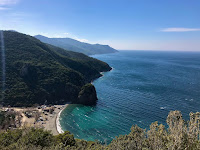Piha-Boo
Piha is a black sand beach with a lot of history.
Firstly there is Lion Rock, which we partly climbed but sadly due to landslides were not able to continue all the way to the top. Lion rock is the eroded remains of a volcanic vent that would have erupted about 15-16 million years ago. To Te Kawerau (the natives to the land) Lion Rock was known as Te Piha, the name now given to the beach. Te Piha referred to the patterns of waves separating and breaking on the front of the rock.



Following our morning walk up Lions rock we then ventured to find Kitekite falls which was a short hike through Waitakere’s regional park. After we had got to the top of the steep ascend we were tempted to swim in the river and shower in the falls but the spray back of the falls was refreshing enough. We found the preservation of the forest rather impressive, we had to scrub and disinfect our boots upon entry and exit of the forrest. This is due to a pathogen called Phytophthora agathidicida which is killing the Kauri trees which is in the same family as the disease that caused the Irish potato famine. There are many carriers of the pathogen (including ourselves) but scientists are still trying to find a way of preventing the spread of the disease. And that concludes our science lesson for today!





 |
| Also this little guy was at our campsite. Any guesses as to what bird it is? |
P.S. The name of this blog post is inspired by Will’s idea to open up a bar shack on the beach called Piha-boo!



Comments
Post a Comment